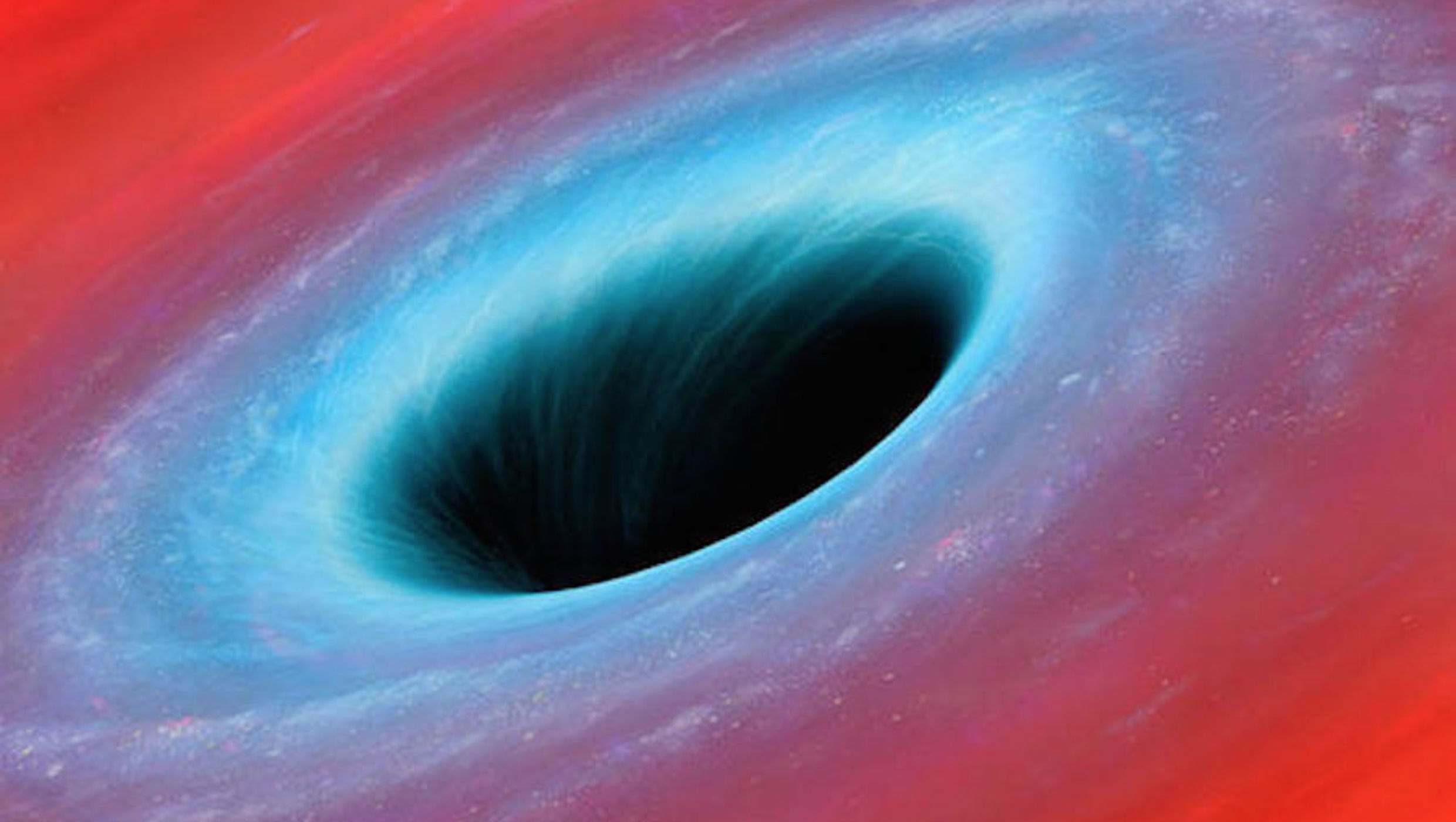Create a free profile to get unlimited access to exclusive videos, sweepstakes, and more!
Could there be a way to make a sci-fi-style wormhole out of two black holes?

Wormholes have been (theoretical) objects of wonder since the dawn of science fiction, but it would be wild if we could prove these shortcuts through spacetime existed, and even wilder if we could create one.
Theoretical physicist Sepehr Nezami and his team at CalTech now believe there is a way to manipulate black holes into creating that shortcut. Enter quantum entanglement. You need to entangle black holes, no matter how far away from each other, so much that anything happening to one will affect the other. Quantum information that falls into the first one will get shredded. If these black holes are linked the right way, that scrambled info should zoom through the wormhole that connects them and emerge from the second one intact.
Wait. What?! To say this is complicated is an understatement.
The idea started off the back of Hawking radiation, the thermal radiation that Stephen Hawking thought black holes spontaneously spewed out into space as they slowly “evaporated.” One of a pair of photons should be released back into space while the other remains past the point of no return. There have been endless arguments about the quantum value of both the particles and the point of escape, since they could basically be anything. Some scientists believe that if you (again, theoretically) gathered up all the photons that escaped, you’d recover information that was thought to be irreversibly lost in the black hole’s innards.
There is a glaring problem here. You would only be able to access those particles after half the black hole evaporated. Past that point, any qubits (“quantum bits” or basic units of information that can have infinite values) thrown back in would boomerang back, since the black hole had become so entangled with what became its Hawking radiation after billions of years. It is this theory of quantum entanglement that sparked the idea of creating a wormhole.
Nezami is no stranger to quantum teleportation. He can’t beam anyone to the Enterprise and back, but he can zap encrypted information from one quantum device to another. The issue with this kind of information transfer is that you can’t receive a message right away and expect to read it like a text, because it will look unrecognizable. Just entangling the black holes apparently wouldn’t be enough. However, general relativity says that the shortcut that entanglement creates between black holes is no different than a wormhole.
What Nezami and his team propose, since we can’t exactly haul a black hole into a physics lab, is to make quantum particles act like black holes and scramble information incredibly fast. Each “black hole” will be made up of a few qubits, and the two will be entangled as much as possible. An additional interaction will be factored in to make sure that information will emerge without needing to be decoded.
Maybe the Transporter in Star Trek isn’t becoming a reality anytime soon, but if the experiment succeeds, it might just become a little more scientific and a little less fictional.
(via Quanta Magazine)














